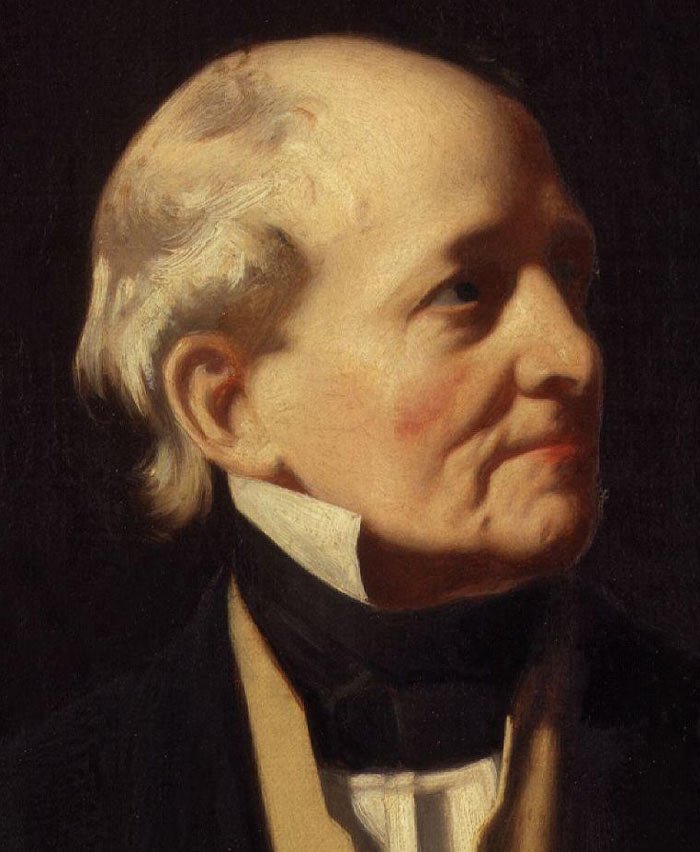Sir Francis Beaufort was an Irish hydrographer, naval officer, and creator of the Beaufort cipher and the Beaufort scale. He was born on May 27, 1774, in Navan, County Meath, Ireland, and died on December 17, 1857. Beaufort’s father was a cleric of Huguenot origin who took an active interest in geography and topography, publishing in 1792 one of the earliest detailed maps of Ireland. Beaufort joined the East India Company in 1789 and enlisted in the Royal Navy the following year, remaining on active service until 1812. He was promoted to lieutenant at the age of 22 and became interested in the weather, writing down short comments about the general weather. He was wounded by sniper fire during a conflict with local pashas in 1812, and later that year, the Admiralty ordered him home due to his injury.
Beaufort’s Contributions
Beaufort’s desire for objectivity and accuracy in meteorological observation led to the development of the wind scale, with which his name is most often associated today. It was first devised in 1806, was several times amended, and is still in use. The Beaufort wind scale is an objective scale ranging from calm (0) up to storm (13) in which wind strength is correlated with the amount of sail a full-rigged ship would carry appropriate to the wind conditions. It was first used officially by Robert Fitzroy in 1831 and adopted by the British Admiralty in 1838. When sail gave way to steam, the scale was modified by defining levels on it in terms of the state of the sea or, following George Simpson, wind speed.
In 1829, Beaufort became hydrographer to the Admiralty, where he promoted hydrographic studies for several British expeditions. As Hydrographer to the Royal Navy, Beaufort worked tirelessly at organizing surveying expeditions and meticulously collating their findings with a combination of artistic skill and mathematical ability. He commissioned voyages to survey and chart areas of the world, such as those of the Beagle with Charles Darwin and the Erebus with Joseph Hooker. The sea north of Alaska was named for him.

Beaufort’s Personal Life
Beaufort was married to Alicia Magdalena Wilson, and they had six children. He was a major figure in the establishment of University College, London, and served on royal commissions on pilotage and tidal harbors, and on Thomas Drummond’s parliamentary boundary commission. Beaufort retired from the Royal Navy with the rank of rear admiral on October 1, 1846, at the age of 72. He became “Sir Francis Beaufort” on being appointed KCB (Knight Commander of the Bath) on April 29, 1848, a relatively belated honorific considering the eminence of his position from 1829 onward. After 68 years of service, Sir Francis Beaufort retired from the Admiralty in 1855, and he died two years later in 1857.
Citations:
[1] https://en.wikipedia.org/wiki/Francis_Beaufort
[2] https://www.britannica.com/biography/Francis-Beaufort
[3] https://www.encyclopedia.com/science/encyclopedias-almanacs-transcripts-and-maps/beaufort-sir-francis-1774-1857
[4] https://www.askaboutireland.ie/learning-zone/primary-students/3rd-+-4th-class/3rd-+-4th-class-environme/sea-time-story/famous-irish-mariners/admiral-sir-francis-beauf/
[5] https://www.dib.ie/biography/beaufort-sir-francis-a0523
[6] http://www.navanhistory.ie/index.php?page=hydrographer
[7] https://www.oxfordreference.com/view/10.1093/oi/authority.20110803095454277
The best way to keep in touch and to be aware of our events
Don’t forget to confirm your subscription in the Email we just sent you!

Please pre-book your visit over Christmas at least 24h in advance via Email or Online booking.
MondayClosed
Tuesday10:00 AM - 5:00 PM
Wednesday10:00 AM - 5:00 PM
Thursday10:00 AM - 5:00 PM
Friday10:00 AM - 5:00 PM
Saturday11:00 AM - 5:00 PM
Sunday11:00 AM - 5:00 PM
Adult €7.50
Children 10 to 16 €3
2 Adults & 2 Children €15
Adult is 16 years+
Family Ticket is 4 family members together
Children under ten are free but must be accompanied by an Adult

The Maria Edgeworth Centre is operated under the direction of the Edgeworthstown District Development Association (EDDA) – a Not for Profit Voluntary Community based registered charity Reg:223373. Registered Charity Number 20101916
© 2023 Maria Edgeworth Centre – All Rights Reserved
On the 17th of August 2024 as part of Heritage Week, with support from the County Heritage Officers, the Heritage Council, Longford County Council Libraries, Archives, Arts and Heritage,
IMMA, OPW and the Computer and Communications Museum Ireland on the NUIG Campus,
Ray Jordan and volunteers from the Maria Edgeworth Centre aim to simulate Edgeworth’s 1803 transmission by telegraph.
Click the link below to learn more or to register to attend either in person or via Zoom.
Join us for this recreation of a key moment in the history of communications